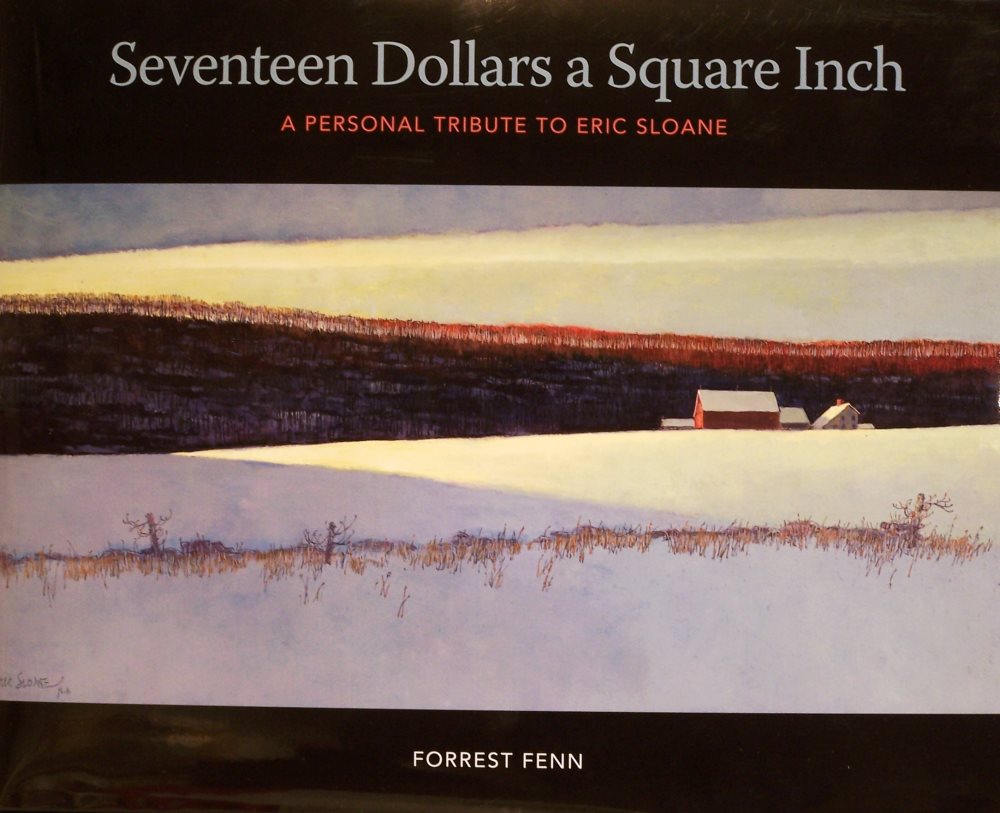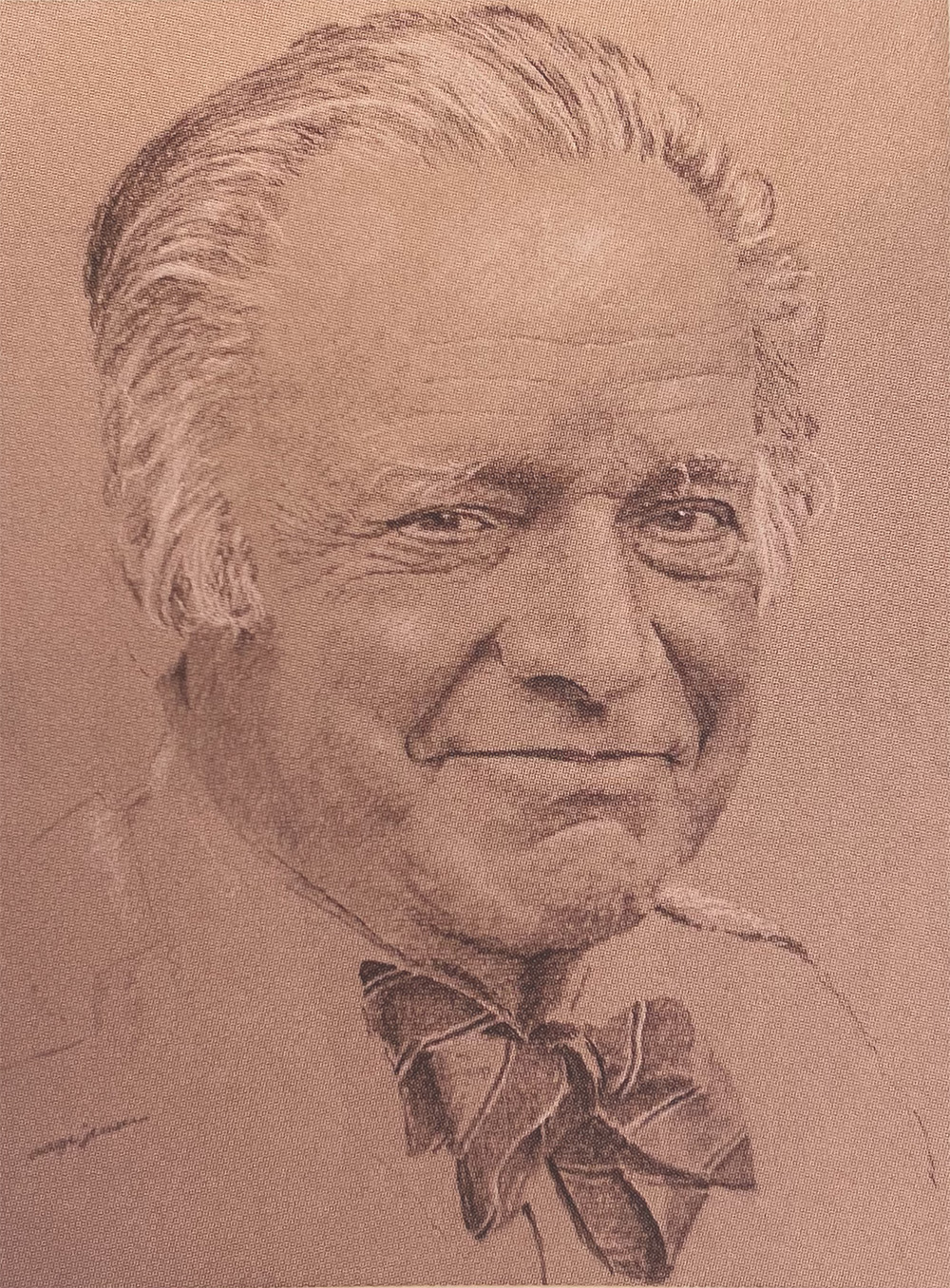
Biography

Born Everard Jean Hinrichs in New York City in 1905, Eric Sloane was the son of a prominent meat broker.
After his mother died when he was a young teen, his father remarried. Eric had an unbearable home life
with the new family. One of his escapes was to the home of his neighbor, Fred Goudy, who designed
typefaces for printing. From Goudy, he learned to form and write typefaces, and eventually paint signs.
This was one of the ways many American artists started their early careers. Fine lettering became an
invaluable foundation for Everard and his future as a fine artist.
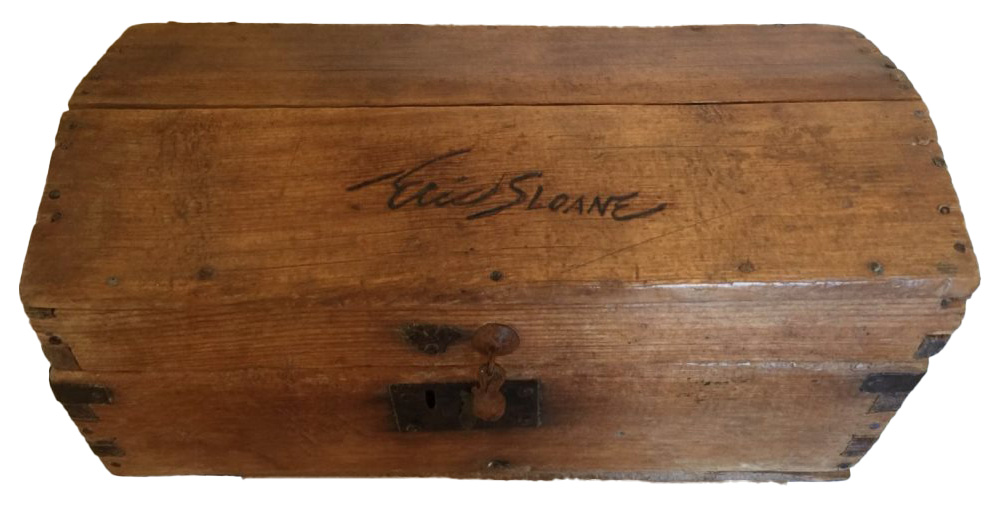
In 1924, young Everard drove his father's twin-six Packard roadster west. He made it as far as Ohio
before selling the car for fifty dollars and setting out on foot painting signs on barns, store signs,
and windows to pay for his travels. Somewhere in the journey he acquired a Model T Ford, which aided his
travels. He ventured across Amish country in Pennsylvania down to New Orleans, then on to Taos, New
Mexico. Sloane actually wrote different versions of his trip in the various books he authored. He
justified this by saying, "my memory will often embellish some aspects." By the age of twenty, his art
career had begun. His first works were in pen and ink; soon after, in Taos, he was encouraged to try oil
paints by the Russian-American painter, Leon Gaspard.
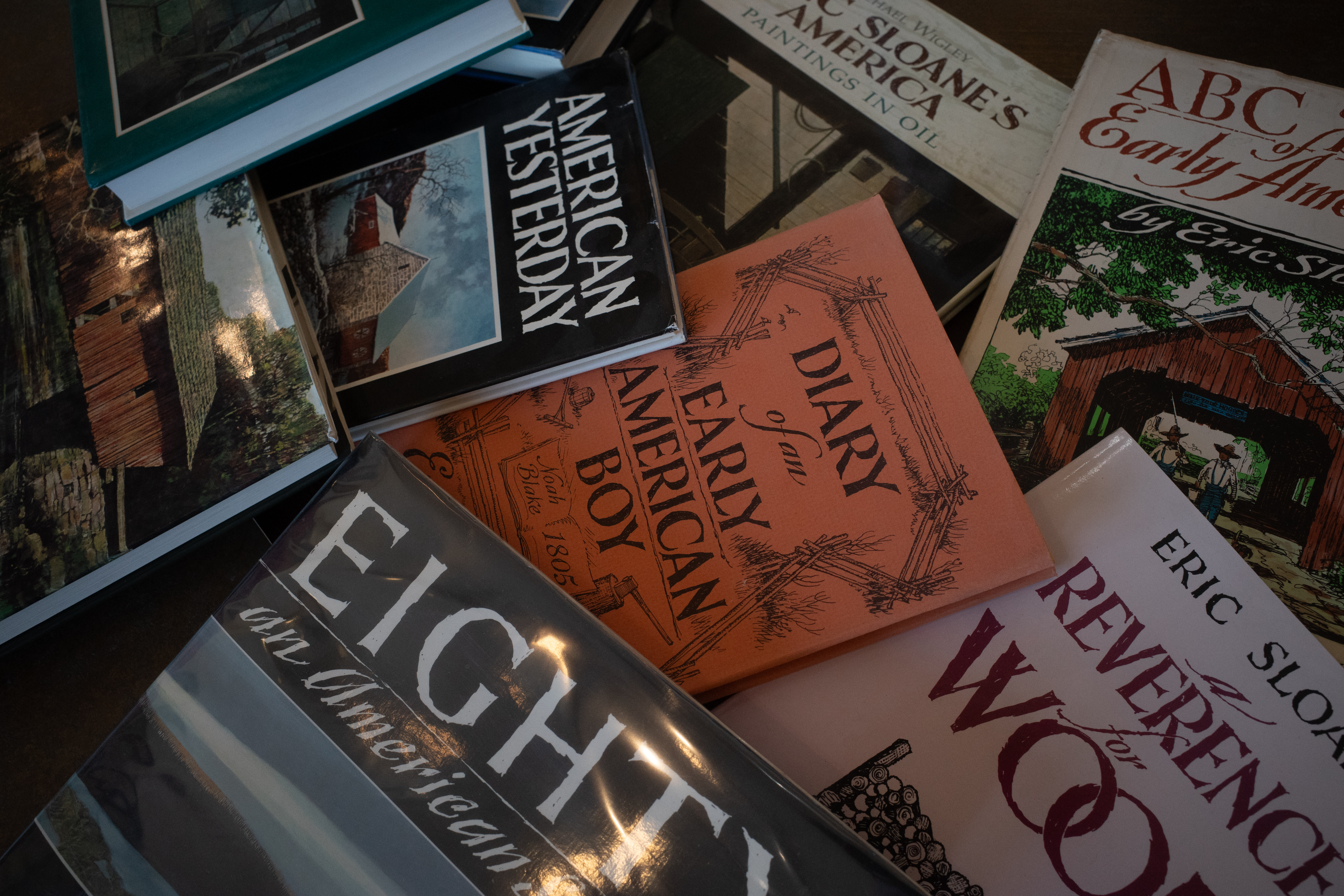
Traveling back to New York in his Model T the following year, Everard wrote about the sky and decided to
make meteorology and sky painting his life's work. What should have been a fifteen-day return trip, took
nearly a month. Back home, the young artist spent time painting numbers on planes at Floyd Bennett
Field, making signs and anything artistic to pay for his pursuit of art. In 1929, he attended the Yale
School of Fine Arts and the following year he joined the Art Students League in New York City. During
his studies in 1930, he was influenced by John Sloan and George Luks at the Art Students League. He took
to heart their discussion of how they each wished they had used a different painting name during their
development years, thus preventing early paintings of poor quality to be attached to their true names.
From this discussion came the pseudonym, Eric Sloane. "Eric" was derived from the center of the word
America, and "Sloane" was the last name of his mentor, John Sloan, with an "e" added to the end.
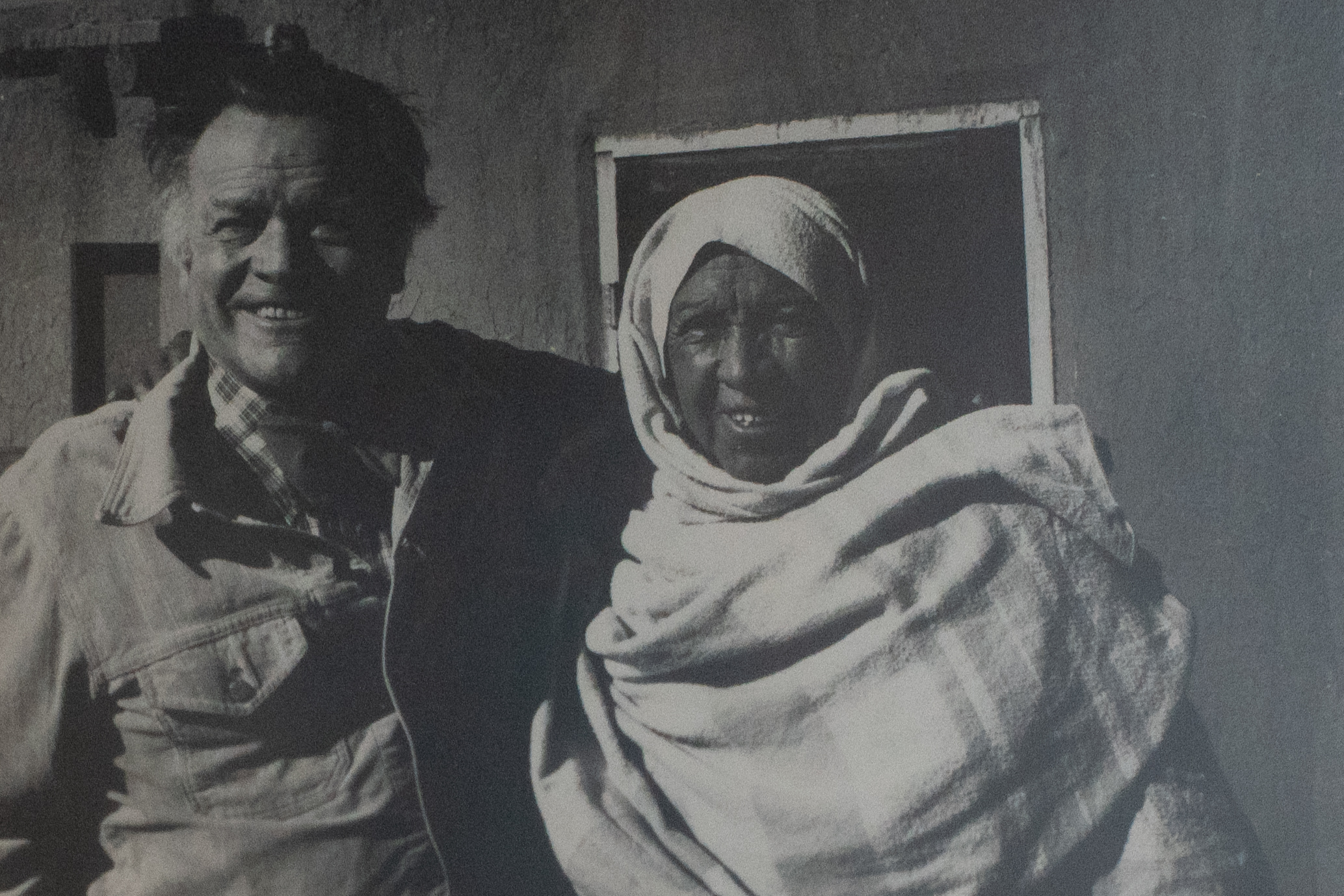
Eric Sloane continued his painting and work around New York City. In 1935, he enrolled in the New York
School of Fine and Applied Arts. This was one of the many interests developed by the young painter
during the 1930s. From flying with famous aviators, whose planes he had lettered, he developed a renewed
interest in cloud formations and weather. Often he painted these cloud formations, which led him to the
study of meteorology at the Massachusetts Institute of Technology. The science and tedious math did not
appeal to Sloane, so after the first year, he quit school and relied on old weather books, diaries, and
almanacs for additional study. In the pages of these books and magazines he discovered early American
farming, antique tools, and eighteenth-century building techniques. The foundations for his future life
as a painter were formed from the elements of the sky, rural architecture, and early tools. He even
became America's first television weatherman for a very brief time in 1946 on the DuMont station in New
York.
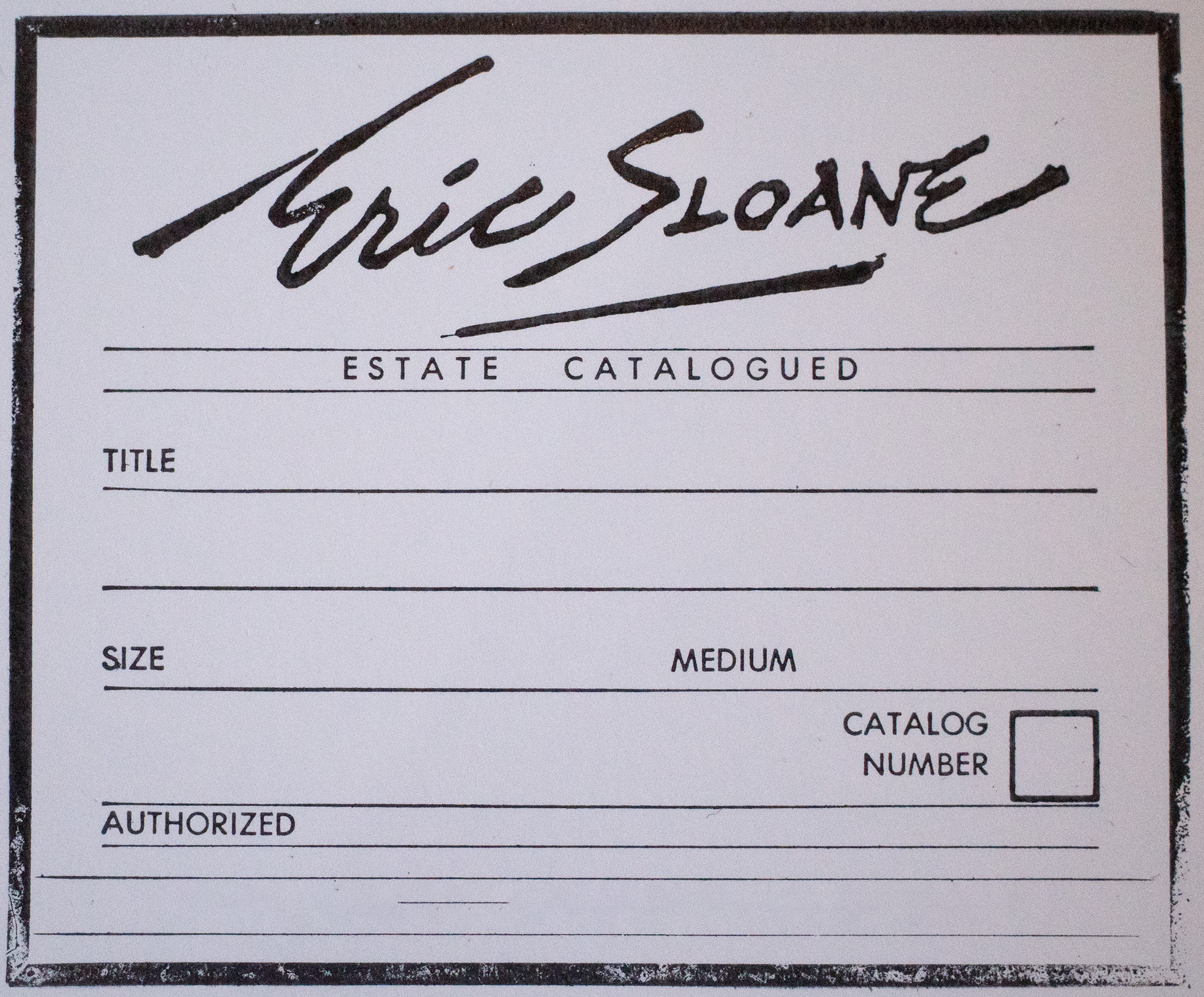
Later, in the early 1930s, Sloane moved back to Taos and lived at the guesthouse of Leon Gaspard, a
famous painter. Folklore proclaims that he was invited to exhibit a painting with the Taos Society of
Artists, turning down the offer after lunching with Gaspard and the famous Russian painter, Nicolai
Fechin. Each artist strongly urged him not to associate with illustrators. Eric moved back to New
England in 1940, and established his life and career. He visited Taos every year thereafter.
Sloane was blessed with friends and collectors from all walks of life. He knew every U.S. president from FDR to George H. W. Bush. He wrote and conversed with the great authors of our time at the Dutch Treat Club in New York City. They included John Steinbeck, Ernest Hemingway, Truman Capote, Leon Uris, and a host of others. He sold his first sky painting to Amelia Earhart, flew with Wiley Post and Will Rogers out of Floyd Bennett Field in New York, and established lasting relationships with Doolittle, Lindbergh, and the great aviators of the time. Leonid Brezhnev invited Sloane to show at the U.S.S.R. Academy of the Arts in Moscow during 1974. More than two million Russians viewed the exhibit. Brezhnev himself purchased two paintings for his home. Sloane reprinted his most famous book, I Remember America, for this exhibition. In 1968, he was inducted into the National Academy of Design, America's most important artistic guild.
During his lifetime, Sloane's paintings were permanently collected in more than fifty museums worldwide. He established the Hall of Weather at the American Museum of Natural History. His breathtaking L-shaped mural greets more than two million visitors annually at the Smithsonian's Air and Space Museum, towering 58 feet high and 75 feet in length. In 1987, the National Cowboy Hall of Fame held a Retrospective Exhibition of Eric Sloane with eighty paintings and artifacts from the Estate, graciously compiled and loaned by Mrs. Eric Sloane. The Museum Board of Directors unanimously voted to acquire one of his paintings for their permanent collection, a scene depicting a Taos Morado (an abandoned church), which was signed Eric Sloane and included the initials E.J.H. below his traditional signature. This was one of the few paintings ever noted with the initials from his given name, Everard Jean Hinrichs.
In keeping with the spirit of Eric Sloane, this book will not be a biography about the painter, author,
and collector extraordinaire. Sloane covered all of those memories in the countless books he authored.
He romanced, exaggerated, and told his audience everything they would ever need to know about himself.
Instead, this will be an offering of his paintings, a collection of his random thoughts about his art
and observations, an explanation of how and what he painted, and most importantly: a celebration of Eric
Sloane.
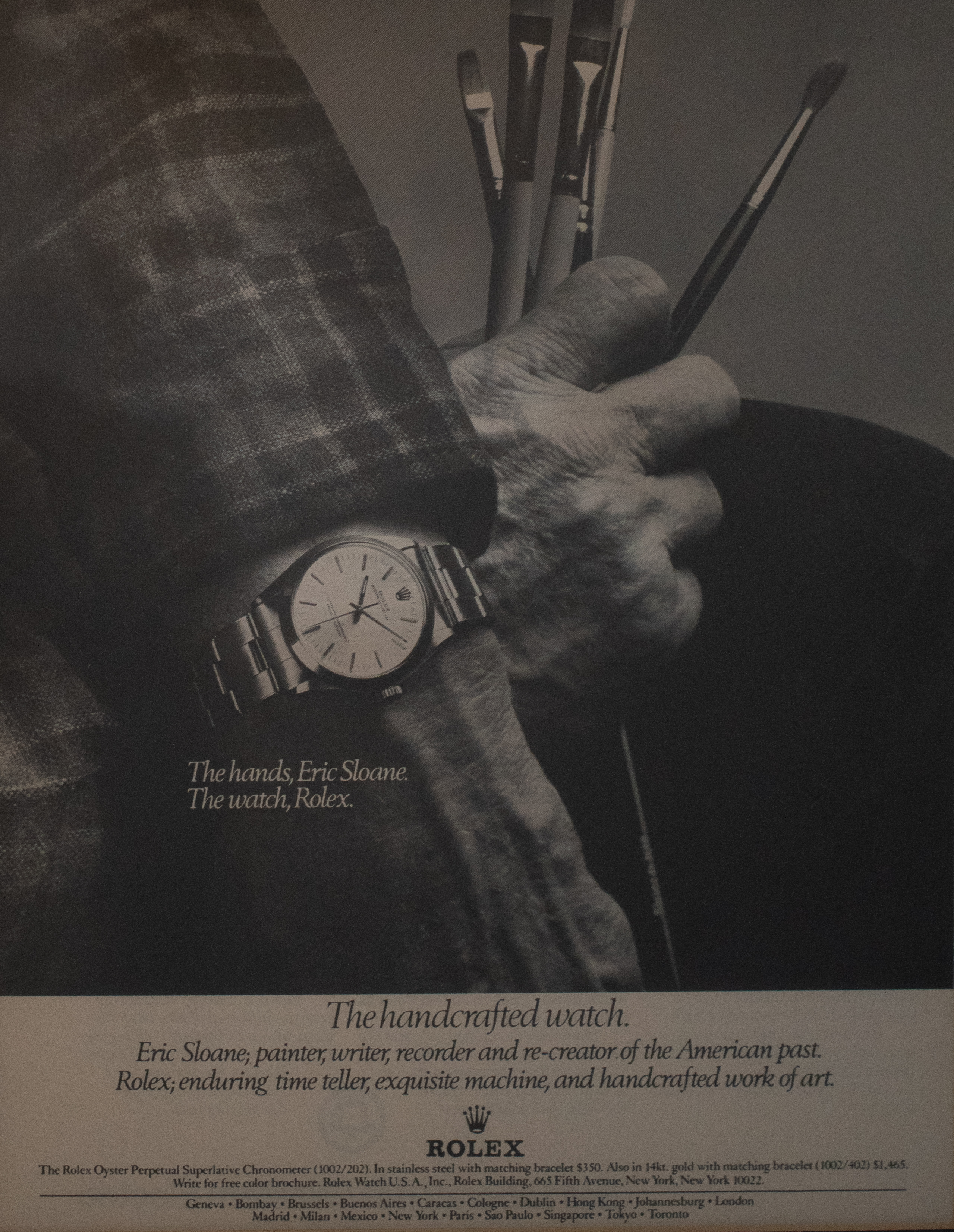
Smithsonian Institution Mural
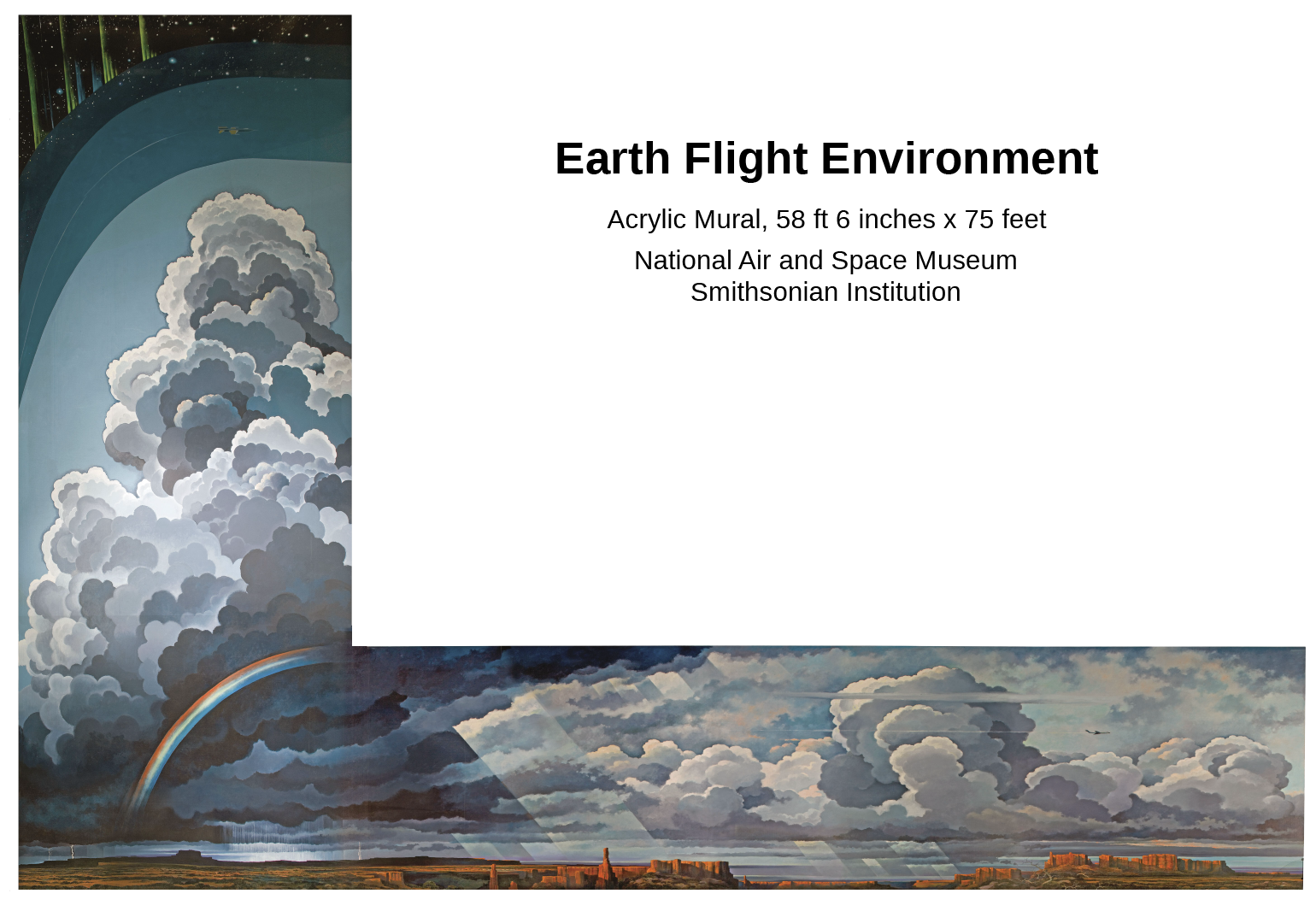
"I painted the large mural for the air and Space Museum of the Smithsonian, having conceived and established the Hall of Weather for them a year earlier. Originally, I planned to turn down the mural; I remember my frightened state, as I am afraid of heights. But the astronaut Michael Collins talked me into taking the project. He said, 'How can you talk to a man who has been to the moon twice about being afraid of heights.' With that reasoning, I accepted the commission and found myself sucrrying up and down the zig-zag scaffold. Towering 50 feet high at the top of the painting made me feel quite nervous, as did having to use acrylic paint, which I constantly had to spray down to keep it from drying too quickly. Oil paint would not have lasted for such a mural and required too much continual maintenance. My painting, Earth Flight Environment, reached 58 feet 6 inches high and spans 75 feet in length. I completed the work in three weeks using over 100 gallons of acrylic paint. While I do not consider this to be my greatest painting, it is nonetheless a masterpiece of engineering for me as a painter."


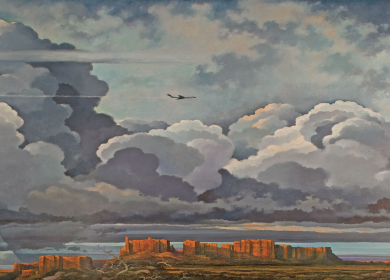
Eric Sloane's Painting Box

A chance encounter in the late 70's led a young Michael Wigley at his Oklahoma City Gallery, to refer a Canadian gentleman, who inherited several large paintings by the iconic American Illustrator, N.C. Wyeth. Knowing that these were important paintings, Michael contacted Forrest Fenn at his infamous Fenn Galleries and arranged for Forrest to see the images. Within a few months the Fenn Galleries sold the Wyeth paintings and a relationship was formed between the two gallery owners.
In 1978 Forrest Fenn introduced Michael to Eric Sloane on one of his many visits to Santa Fe. Graciously, Forrest insisted Michael always stay in one of his Guest Quarters on the Gallery grounds, which he did many times before the Fenn Charm convinced him to make the move to Santa Fe in 1991. Their mutual admiration for Eric Sloane was shared over the years and they worked together presenting his paintings to collectors, including the Eric Sloane, Portraits Of America Exhibition, November 5th, 1983, in Oklahoma City.
Following Eric's passing in 1985, Michael worked with Mimi Sloane for the Estate of the late artist. This included the 1987 Eric Sloane Retrospective Exhibition at the National Cowboy Hall of Fame and Western Heritage Center in Oklahoma City, April 25, 1987. Following the widely attended, two-month Exhibition, Mimi Sloane presented Eric's old wooden Painting Box to Michael Wigley, representative of Eric Sloane's Art Estate. Michael, who always treasured the box, for its rich heritage and historical significance, kept it at his home.
Eric Sloane's Painting Box (pictured above) holds a treasured history that spans decades and continues to exist today, over thirty years since the artist's death. The box served as Eric Sloane's faithful companion throughout the latter half of his artistic journey, accompanying him on his travels between the Southwest and Northeast United States for many years. Eric preferred to drive from Connecticut to Santa Fe so he could gather scenes of rural America along the way. Occasionally, he would stop and sketch, but he preferred to paint more by memory than by photographs or on location.
Years later, Michael exhibited the box at his gallery of Sloane paintings. Forrest Fenn, a frequent visitor to the gallery, saw the box and expressed a desire to purchase the Sloane Painting Box. However, Michael, understanding the sentimental importance of the box, respectfully declined his generous cash offer.
Undeterred, Forrest persisted, attempting to pay for the box several times on subsequent visits, but Michael firmly insisted that the box could not be bought. Instead, in a heartfelt gesture of friendship and admiration, Michael decided to present the painting box as a gift to Forrest. This act of generosity symbolized the enduring bond between the two friends and the profound significance of the painting box in their shared passion for art and heritage and Eric Sloane.
Books About Eric Sloane, N.A.
Eric Sloane's America - Michael Wigley
Price: $70.00
Ranchos de Taos Church - Museum of New Mexico Press
Price: $35.00
